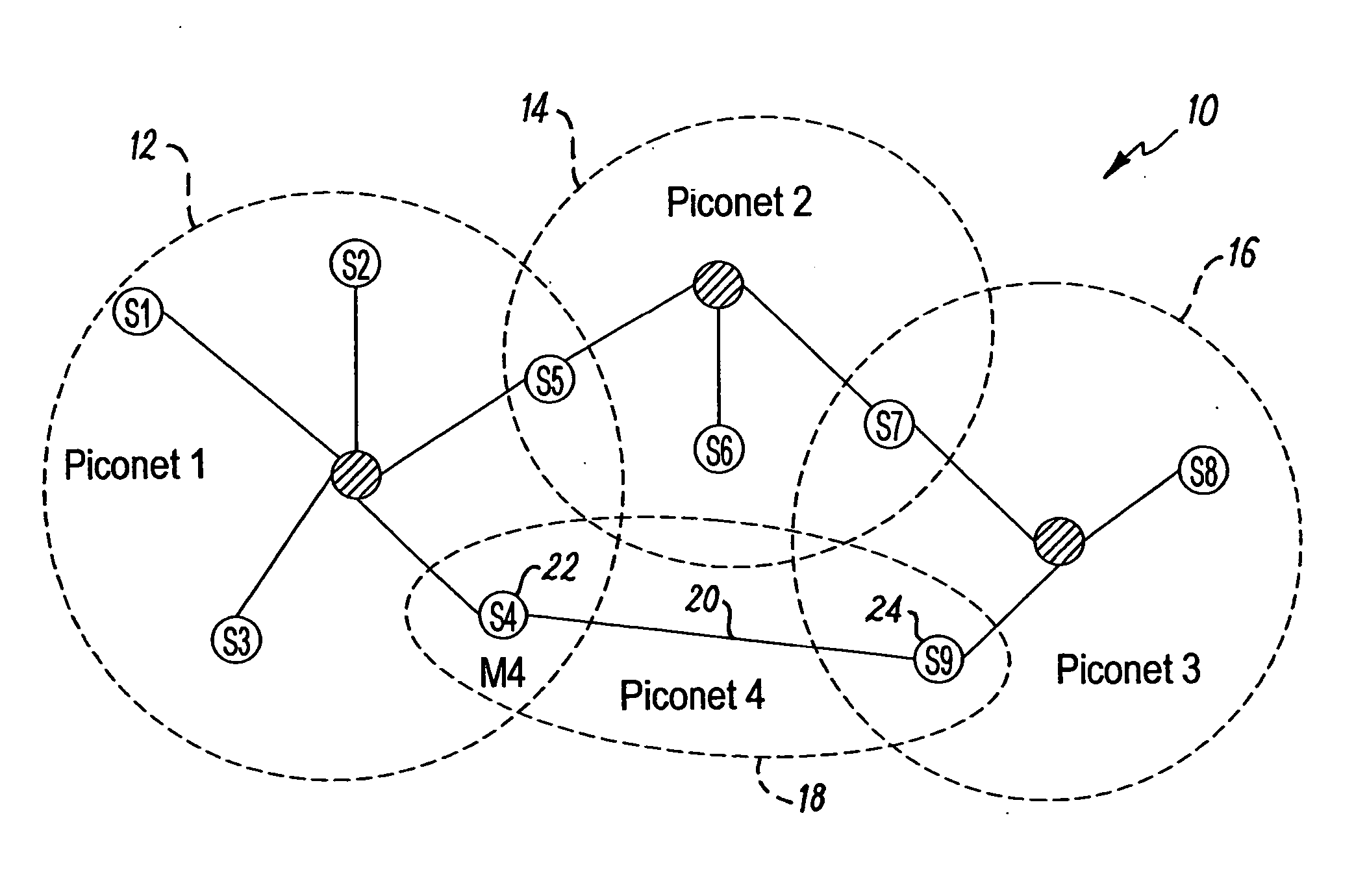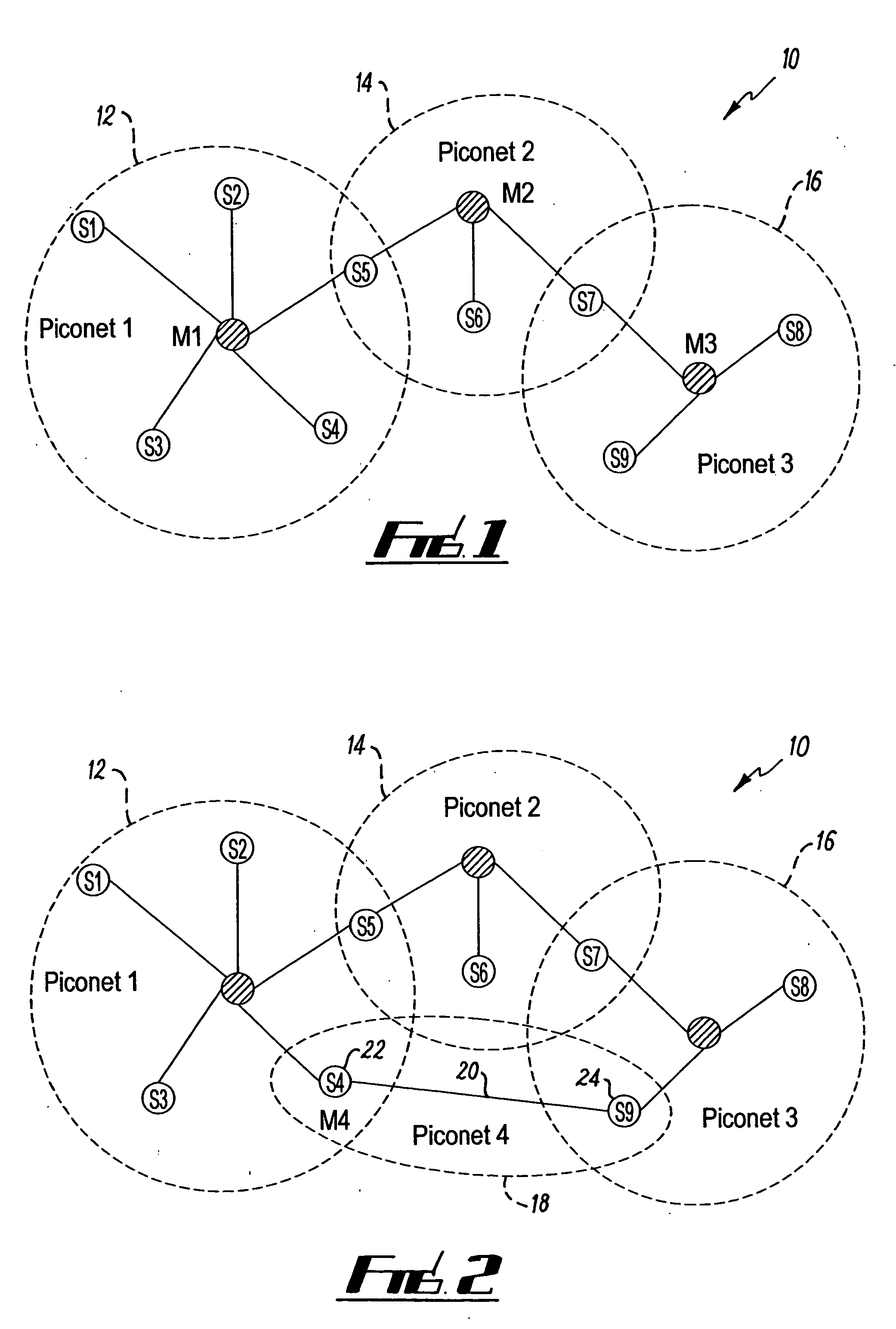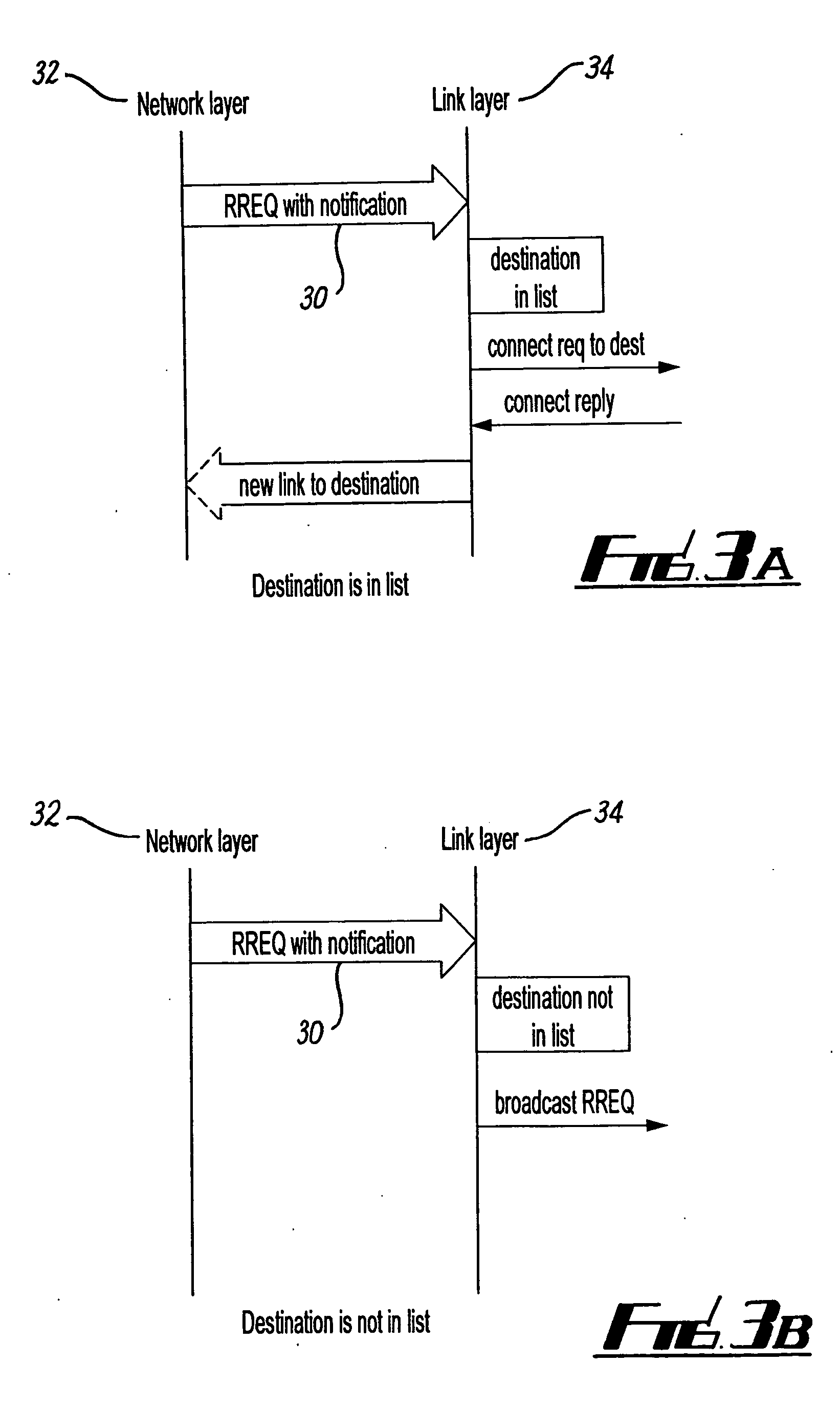Method or device for delivering a packet in a scatternet
a scatternet and packet technology, applied in data switching networks, high-level techniques, instruments, etc., can solve the problems of inefficiency in routing table maintenance, concomitant increase in latency, and short transmission routes, so as to reduce interference and power consumption, the effect of saving bandwidth within the picon
- Summary
- Abstract
- Description
- Claims
- Application Information
AI Technical Summary
Benefits of technology
Problems solved by technology
Method used
Image
Examples
Embodiment Construction
[0027]FIG. 1 illustrates an example of a Bluetooth (trademark) scatternet 10. The scatternet is a distributed LPRF network that comprises three separate piconets that are interconnected by common nodes. Each piconet has a star-topology comprising a central Master node and a plurality of dependent Slave nodes. Each piconet forms a sub-network of the scatternet 10.
[0028] A first piconet 12 is controlled by the Master M1 and includes five Slaves S1, S2, S3, S4 and S5. A second piconet 14 is controlled by the Master M2 and includes three Slaves S5, S6, S7. A third piconet 16 is controlled by the Master M3 and includes three Slaves S7, S8 and S9. The Slave S5 is a common node interconnecting the first piconet 12 with the second piconet 14. The Slave S7 is a common node interconnecting the second piconet 14 with the third piconet 16.
[0029] Each of the Masters and Slaves is a Bluetooth-enabled device. Such a device may operate as a Master or a Slave depending upon circumstances. The Blue...
PUM
 Login to View More
Login to View More Abstract
Description
Claims
Application Information
 Login to View More
Login to View More - R&D
- Intellectual Property
- Life Sciences
- Materials
- Tech Scout
- Unparalleled Data Quality
- Higher Quality Content
- 60% Fewer Hallucinations
Browse by: Latest US Patents, China's latest patents, Technical Efficacy Thesaurus, Application Domain, Technology Topic, Popular Technical Reports.
© 2025 PatSnap. All rights reserved.Legal|Privacy policy|Modern Slavery Act Transparency Statement|Sitemap|About US| Contact US: help@patsnap.com



